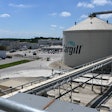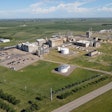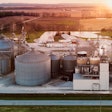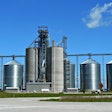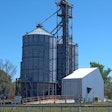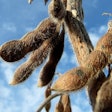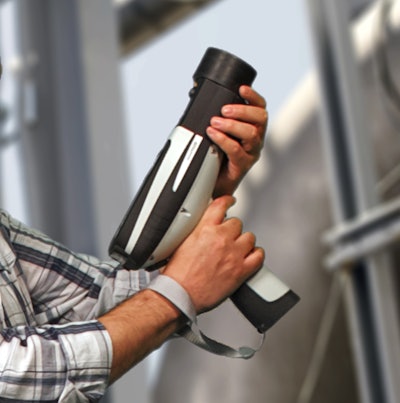
The advantages of portable NIR spectroscopy in the feed industry
The feed manufacturing business has become increasingly challenging as manufacturers are squeezed between the volatility of the grain commodities market and the relative inflexibility of international food pricing. Feed manufacturers are under increased pressure to produce consistently high-quality feed at a cost that allows them to remain solvent in the face of increased ingredient prices.
Corn prices, for example, have risen significantly in recent years because of the expansion of non-feed applications, such as ethanol production, according to the United States Department of Agriculture (USDA). Couple rising ingredient prices with challenging international economic conditions and it is easy to see why feed manufacturers must reduce costs wherever possible to remain profitable.
One way for feed manufacturers to drive down overall costs is to maintain tighter control of their mix by using new, portable feed analysis technology. By reducing the time and expense associated with feed analysis, manufacturers are in a better position to increase productivity, and ultimately, profitability.
Rising Costs with No End in Sight
总体对动物饲料的需求继续grow. The global population is rising, especially in developing countries, in which higher incomes and increased urbanization are driving the demand for meat. According to the World Health Organization (WHO), for the large majority of people in developing countries, livestock products remain a desired food for nutritional value and taste. As a result, annual meat production is projected to increase to 376 million tons in 2030 from 218 million tons in 1997 to 1999.
The increased demand for meat has resulted in a corresponding increase in the demand for animal feed. Corn is the primary U.S. feed grain, accounting for more than 90 percent of total feed grain production and use, according to the USDA. Corn production has risen, but corn prices have also increased, adding to cost pressures for feed manufacturers who are not always able to increase their selling prices in response to increased ingredient costs.
In addition to rising ingredient costs, increased regulatory requirements are expected in the years ahead. Feed manufacturers expect that within the next few years, the USDA will move toward 100 percent feed testing, which will further increase the need for tight control of the production process to ensure quality and consistency.
Today, many feed manufacturers, particularly small to mid-size manufacturers, must send their feed samples to third-party laboratories to verify feed content and quality. These manufacturers spend between $40,000 and $80,000 per year to have their samples analyzed off-site and must wait anywhere between three and seven days for the results. In this case, the test results are representative of feed that was produced several days prior and, as such, are not useful for real-time monitoring and control of production quality.
As more animal producers begin to perform their own analysis of the feed that they purchase for their livestock, manufacturers will face increased risk of customer claims that must be paid when it is recognized that a shipment of feed did not meet their specifications. Customer claims are a growing threat to profitability for feed manufacturers in today’s market.
So what options do feed manufacturers have for reducing costs in today’s economic environment? One way is by taking feed analysis from the lab to the field with handheld, lab-quality near infrared (NIR) analysis.
NIR spectroscopy is widely used for quality control in the food and agricultural industries. Acceptance of the use of NIR began with the work of Karl Norris at the USDA, who developed quality methods for agricultural products. Today, NIR is an industry-standard tool for controlling quality and maximizing profitability.
Portable Technology for Anywhere, Anytime Feed Analysis
NIR spectroscopy is well recognized as a reliable method to measure moisture, protein, and fat in food and agricultural samples. By taking NIR spectroscopy technology into the production facility in the form of a portable, handheld unit, such as the Thermo Scientific microPHAZIR AG analyzer, feed manufacturers can obtain actionable, real-time results while reducing costs from third-party testing.
Portable NIR spectroscopy instruments can be taken anywhere and used anytime throughout the manufacturing process. For example, they can be used to inspect feed ingredients as they arrive, allowing manufacturers to determine in real time whether to accept or reject a load.
Many large feed manufacturers have benchtop NIR systems used by staff scientists to build calibration libraries and interpret results. Portable NIR instrumentation can augment these capabilities by taking lab-proven technology off the bench and making it usable by non-scientists such as feed plant workers. Results that are available within minutes in the manufacturing facility are more actionable, enabling decisions that can increase the profitability of each load.
Accurate Testing with Aunir INGOT® Calibrations
When evaluating a new feed analysis technology, one of the most important considerations is accuracy. By accurately measuring and controlling the percentage of protein, fat, and moisture in feed, manufacturers can increase their profitability. For example, consistent control of the protein content allows manufacturers to reduce overages in high-cost ingredients while simultaneously avoiding costly financial penalties that could result from under delivering on protein. Similarly, by controlling moisture to within acceptable levels, manufacturers avoid delivering more grain per pound due to lost water weight.
The Thermo Scientific microPHAZIR AG is the first portable feed analyzer of its kind. During its development, tests were conducted in conjunction with specialists from Aunir to verify the design concept. Aunir is an industry leader in the development of NIR calibration libraries that are used in the feed industry with benchtop NIR systems from many manufacturers.
Once the performance was verified, a full suite of Aunir calibration libraries were transferred to the instrument allowing for the analysis of five categories of animal feed and eight categories of feed ingredients. The Aunir calibration libraries were developed based on more than 30,000 standard samples. The Aunir libraries are widely used for feed analysis in many benchtop instruments today. This full suite of pre-loaded calibration libraries enables the handheld analyzer to be used right “out of the box” with minimal training and adjustments required.
Consistent Feed Quality at Least Cost
Portable NIR spectroscopy represents the future of feed quality analysis. As feed manufacturers continue to face increased ingredient costs and reduced profitability, handheld NIR analyzers such as the Thermo Scientific microPHAZIR AG, offer cost saving results in real time. With minimal training, users can perform on-site analysis to ensure consistent feed quality and reduce production costs.
In addition, by providing on-site test results, portable NIR instruments can help animal producers to ensure that animals are always getting the appropriate feed mix at every production phase. With minimal training, users can verify that the feed mix that they are providing is the correct one to keep their livestock on track.
Bill Grube is a senior product manager in the Thermo Scientific Portable Analytical Instruments business, managing the handheld near infrared spectroscopy product line. Prior to joining Thermo Fisher Scientific, Bill served in a variety of Product Management and Technical Marketing roles at Philips Healthcare. In these roles, he developed and supported portable patient monitoring and defibrillation products. Prior to joining Philips Healthcare, Bill worked as a Senior Systems Engineer at Raytheon Integrated Defense Systems.Bill holds a Bachelor of Science degree in mechanical engineering and interdisciplinary science from Trinity College and a Master of Science degree in mechanical engineering from the University of Wisconsin-Madison. For more information, call (978) 642-1132 or email the Thermo Fisher team at[email protected].









